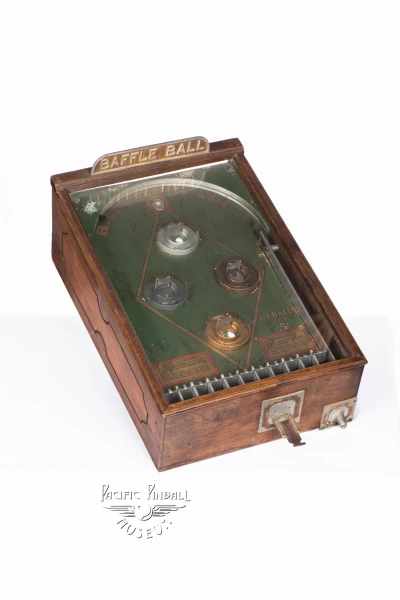Baffle Ball
Baffle Ball Preview Image

Machine Details
Manufacturer

Gottlieb
Year
1931
Technology Era
Electro-Mechanical (EM)
Machine Description
Baffle Ball, released by Gottlieb in 1931, holds the distinction of being one of the first commercially successful pinball machines and is widely considered the game that launched the modern pinball industry. This groundbreaking machine was designed by David Gottlieb during the Great Depression, selling for just $17.50, making it an affordable entertainment option during difficult economic times.
The game's design was elegantly simple yet revolutionary. Players would pull back a mechanical plunger to shoot balls onto a sloped wooden playfield studded with pins and holes. Each hole had a different point value, and players received seven balls for a penny. The game featured no flippers (which weren't invented until 1947) and relied purely on gravity and player skill in launching the ball. The scoring was entirely mechanical, with pins triggering simple counting mechanisms.
Baffle Ball's success was unprecedented - Gottlieb reportedly sold 400 units in the first two weeks of production, remarkable numbers for the era. More significantly, it demonstrated that mechanical amusement devices could be profitable even during the Depression. The game's reliability, simplicity, and profit potential made it extremely popular with operators, helping establish the business model that would define the coin-operated amusement industry for decades to come.
Historical records indicate that approximately 50,000 Baffle Ball machines were manufactured during its production run, an astronomical number for the time period. The game's success provided the foundation for Gottlieb to become one of the largest and most respected pinball manufacturers, a position they would maintain for much of the 20th century. Today, original Baffle Ball machines are highly sought after by collectors and considered important artifacts of American amusement history.